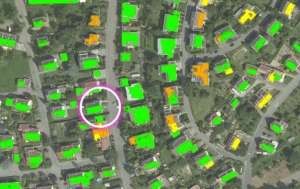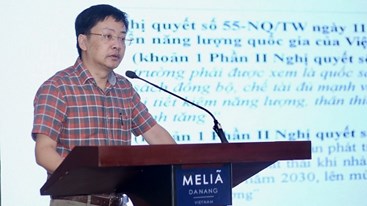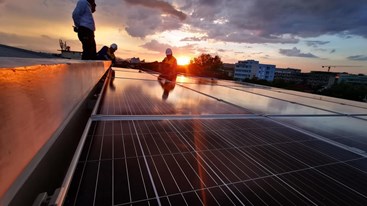Friday, 19/04/2024 | 13:04 GMT+7
Europe is working on its own version of Google’s Project Sunroof. Project Sunroof is one of Google’s newest services, calculating potential savings when home owners switch their electricity supply to rooftop solar power systems.
One of the limiting factors to its popularity, however, is that it is only available for a few cities in the United States. A group at the Karlsruhe Institute of Technology (KIT) and its European partners have now completed their own version of the project, EAGLESolar.
The project is funded by the European Union, to the tune of 2.4 million Euro. It is currently being tested in cities and areas including Karlsruhe’s districts of Knielingen and Nordweststadt.
Technology for solar thermal and photovoltaic (PV) systems is becoming increasingly accessible, due to decreasing costs.
Every home owner, in theory, could produce electricity or heat using these solar power systems. Though a consultant is usually used to survey the proposed site and determine how suitable a roof is for a solar energy system, EAGLESolar can determine the appropriateness level without an on-site visit.

Partners of EAGLESolar provide aerial photos or laser scanning data of the cities for EAGLESolar. The scientists at KIT’s Institute of Photogrammetry and Remote Sensing (IPF) use these resources to create high-resolution, three-dimensional maps. The maps are then used to develop an algorithm to determine the potential suitability of roofs for solar power systems.
The algorithm uses static data available, like the size of roof area available, orientation of the roof, and inclination. Variable data, like shade patterns and other things that could reduce the ability of solar power systems, are also used. With the high amount of variability in determining shade patterns, which depend on season and time of day, the analysis must consider all angles of solar radiation potentially available.
Other data used included regional weather data, to predict expected energy production. Due to the high volume of data, the project required the use of supercomputers. With the high amount of resources required for this project, it is unclear as to whether or not the project will expand, but it is a good step in bringing mass solar power systems to Europe.
Ngoc Diep (The Green Optimistic)


.png?w=367&h=206&mode=crop)
.jpg?w=367&h=206&mode=crop)




.jpg?w=367&h=206&mode=crop) Energy efficiency and conservation usage is an important aspect of the national energy development strategy
Energy efficiency and conservation usage is an important aspect of the national energy development strategy
 Challenges and Opportunities to promote energy efficiency market in Vietnam
Challenges and Opportunities to promote energy efficiency market in Vietnam
 The Ministry of Industry and Trade requests government agencies to coordinate in organizing Earth Hour 2024
The Ministry of Industry and Trade requests government agencies to coordinate in organizing Earth Hour 2024
 Consultation on Energy Efficiency Boiler Catalogue and Wood Drying Guideline
Consultation on Energy Efficiency Boiler Catalogue and Wood Drying Guideline
 Son Ha Co., Ltd, applies energy efficiency and conservation measures
Son Ha Co., Ltd, applies energy efficiency and conservation measures
 Phuc Kien Co., Ltd., is effectively implementing energy-saving measures
Phuc Kien Co., Ltd., is effectively implementing energy-saving measures
.png?w=367&h=206&mode=crop) Request for expression of interest - C2.1.13: Capacity Building on energy efficiency policies development
Request for expression of interest - C2.1.13: Capacity Building on energy efficiency policies development